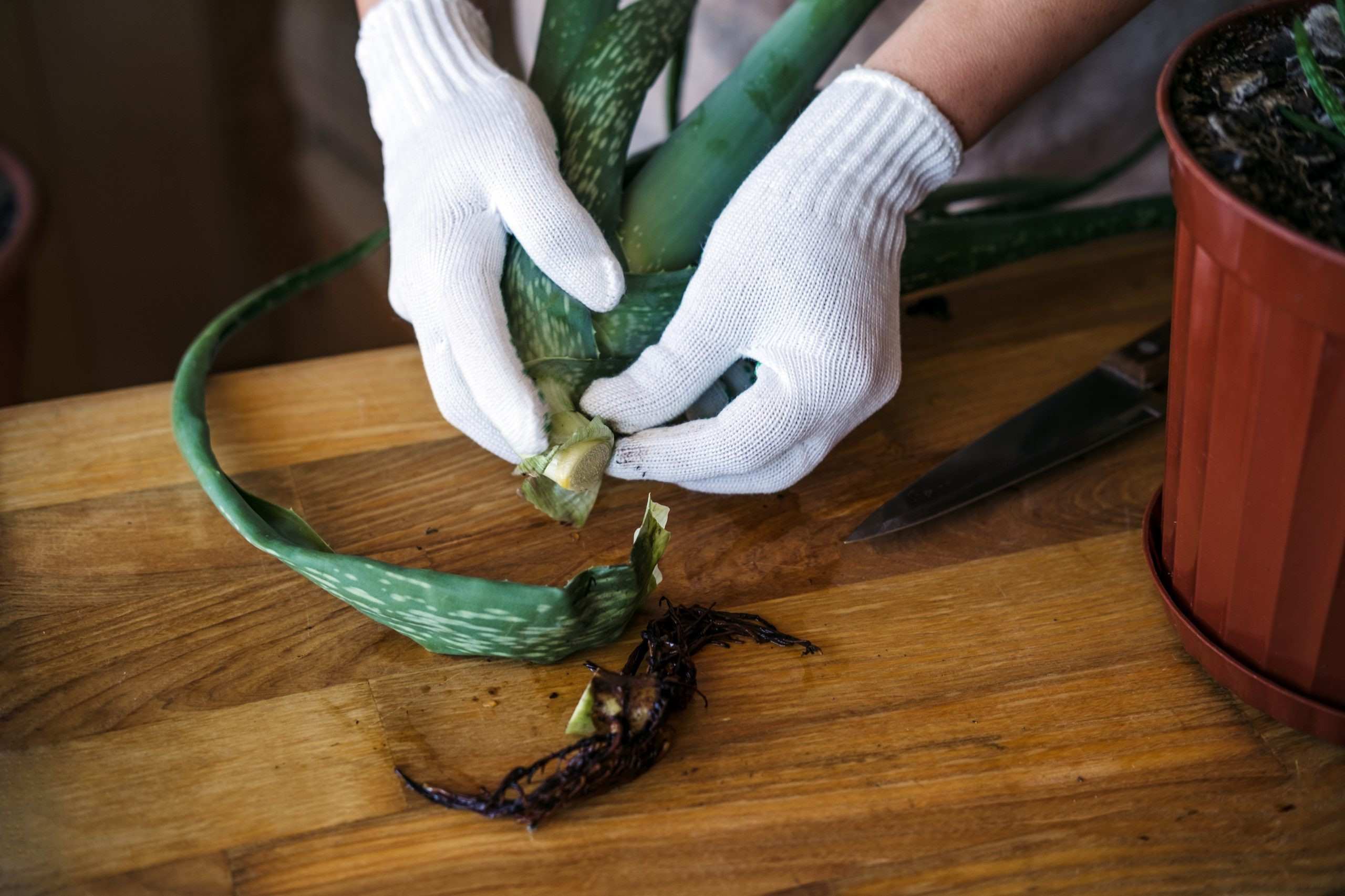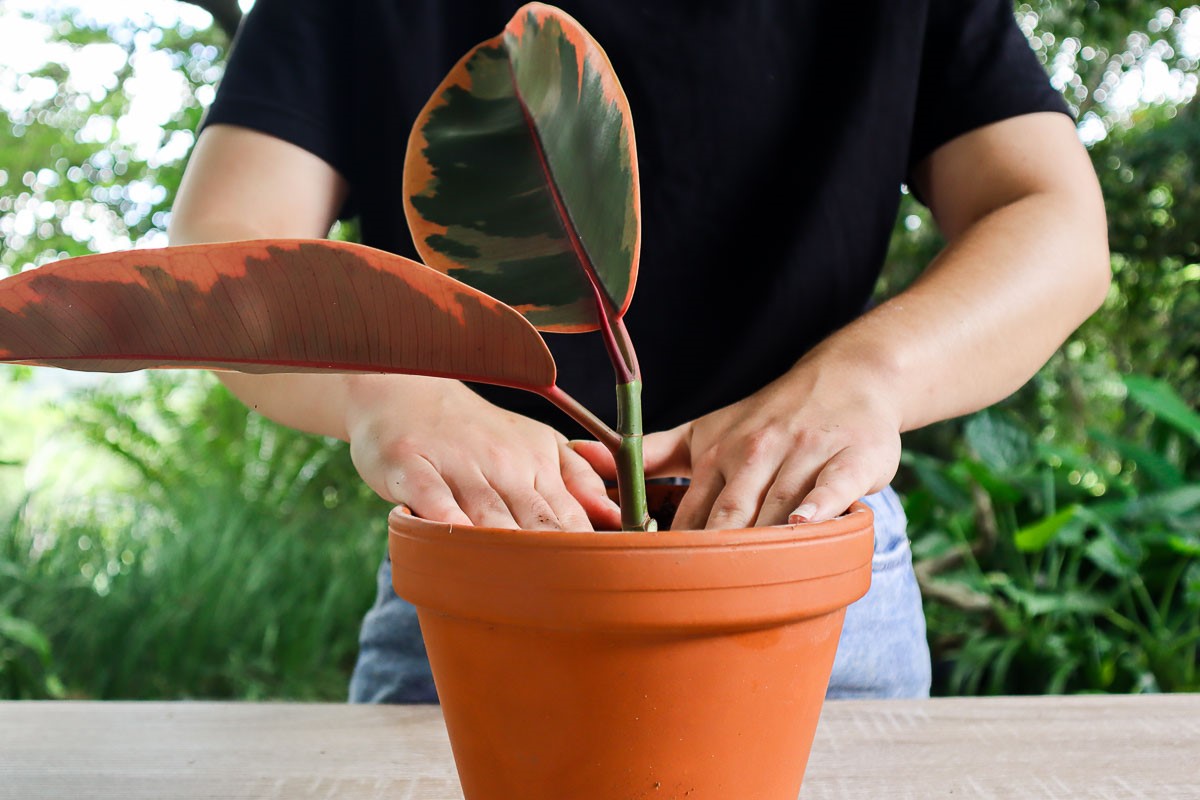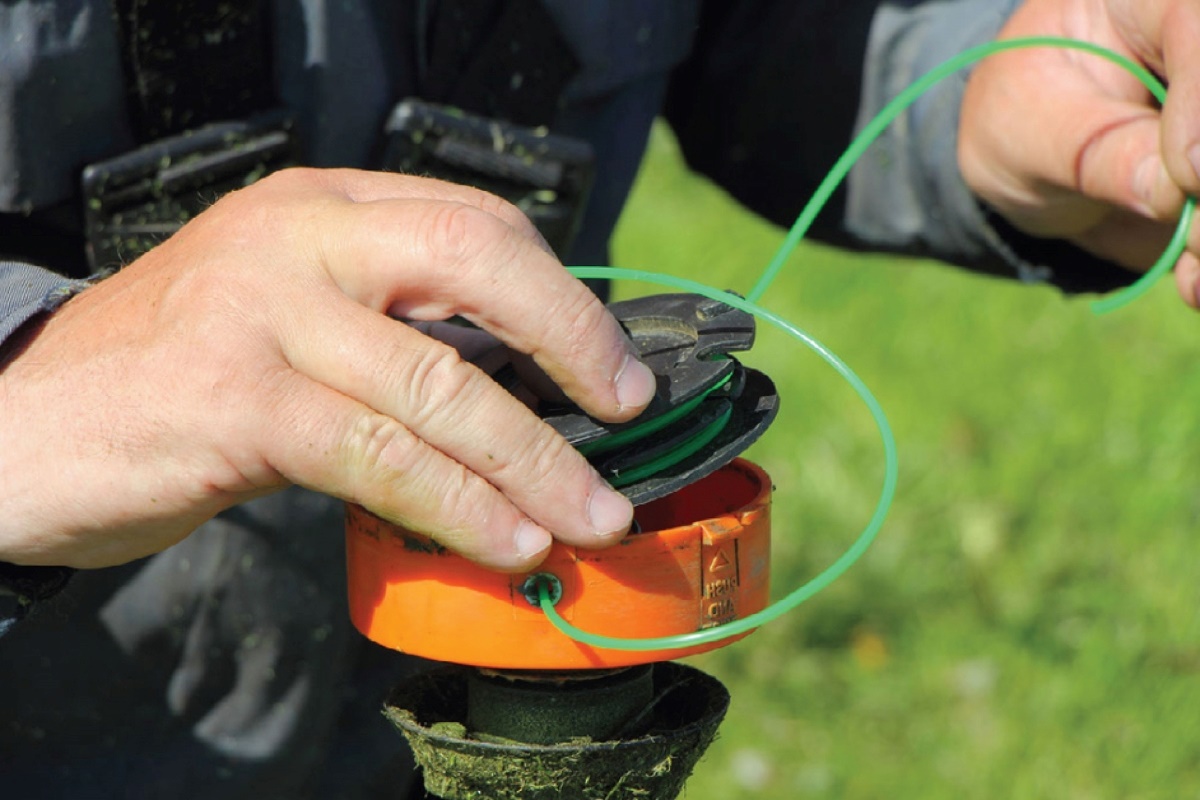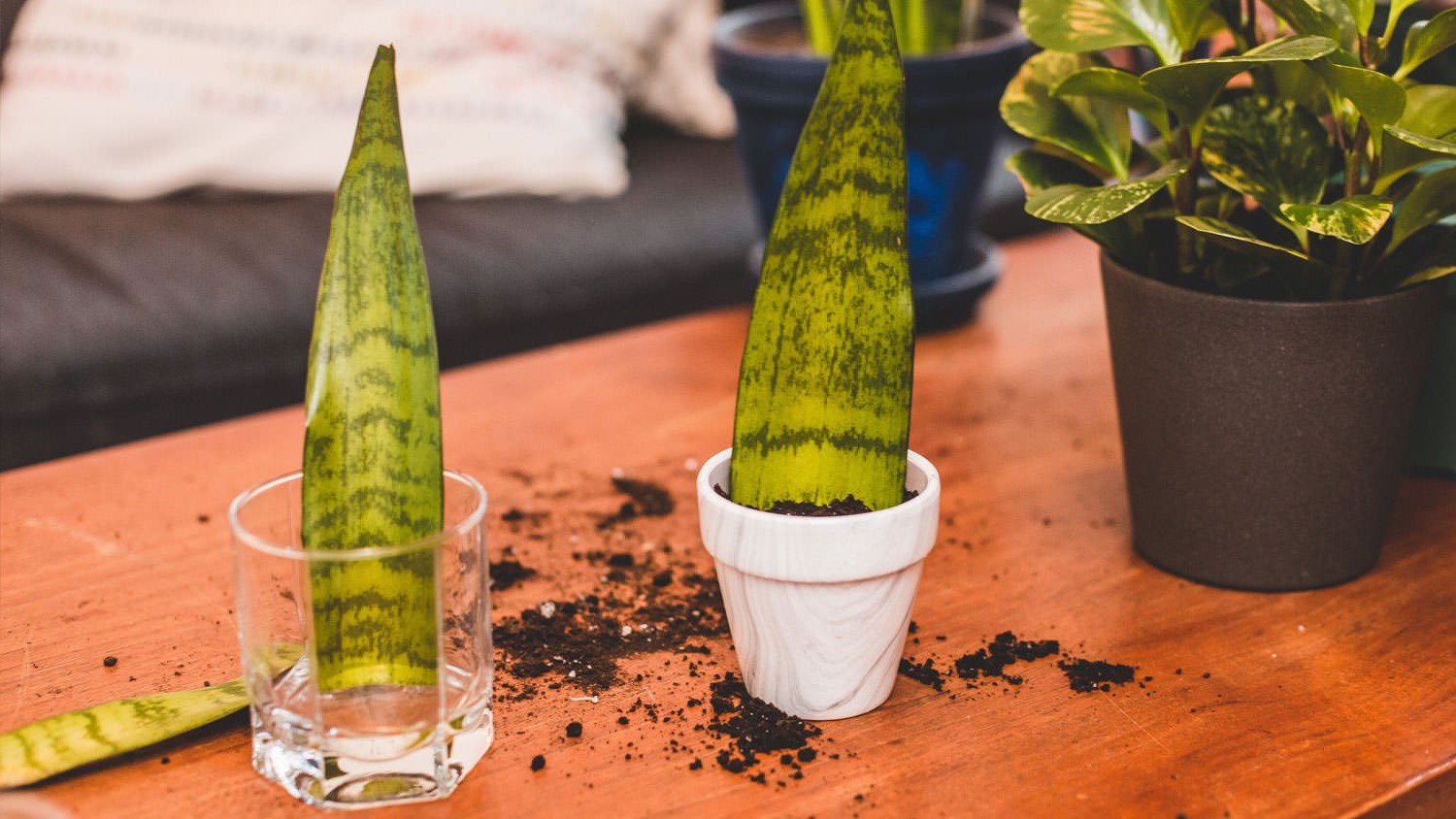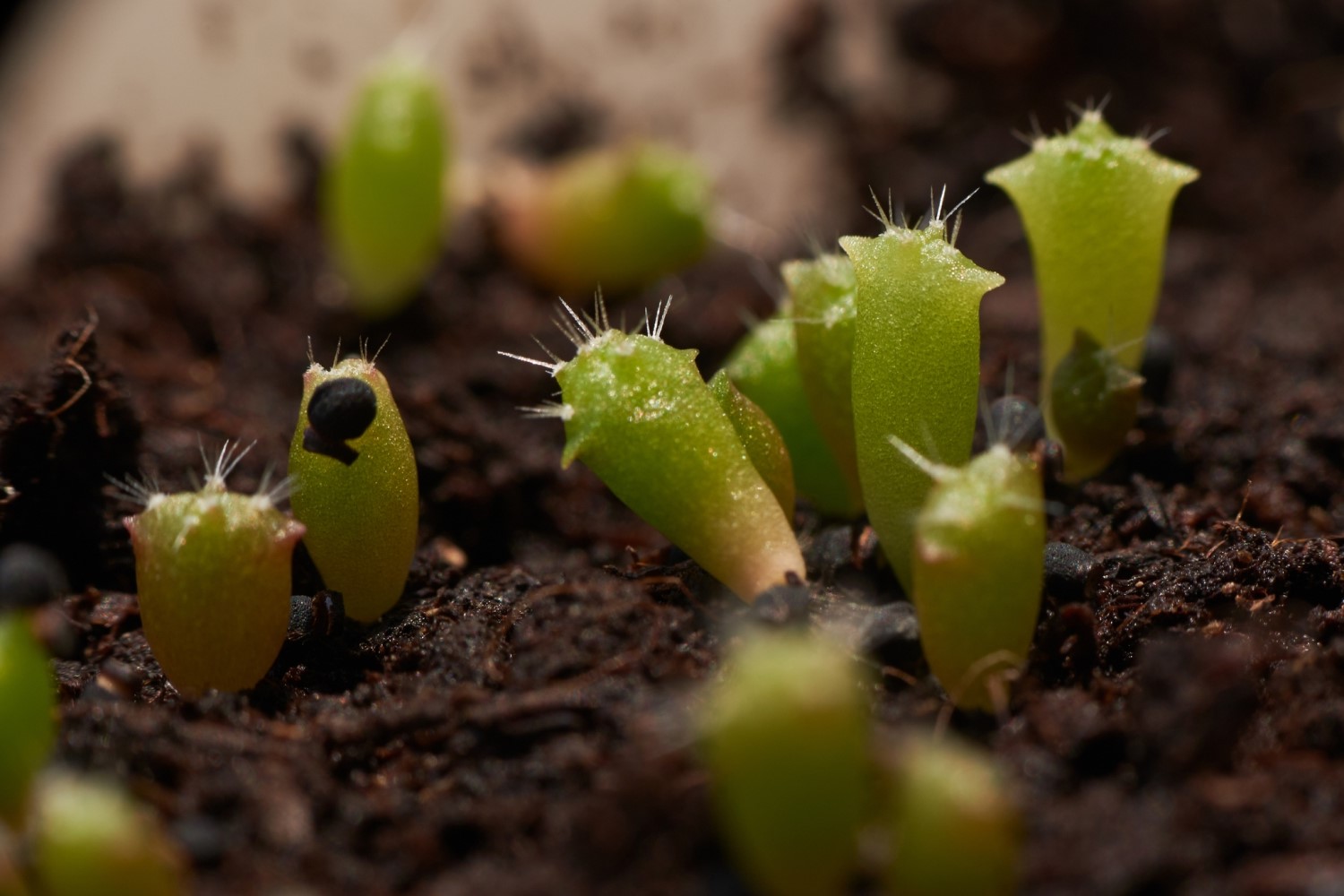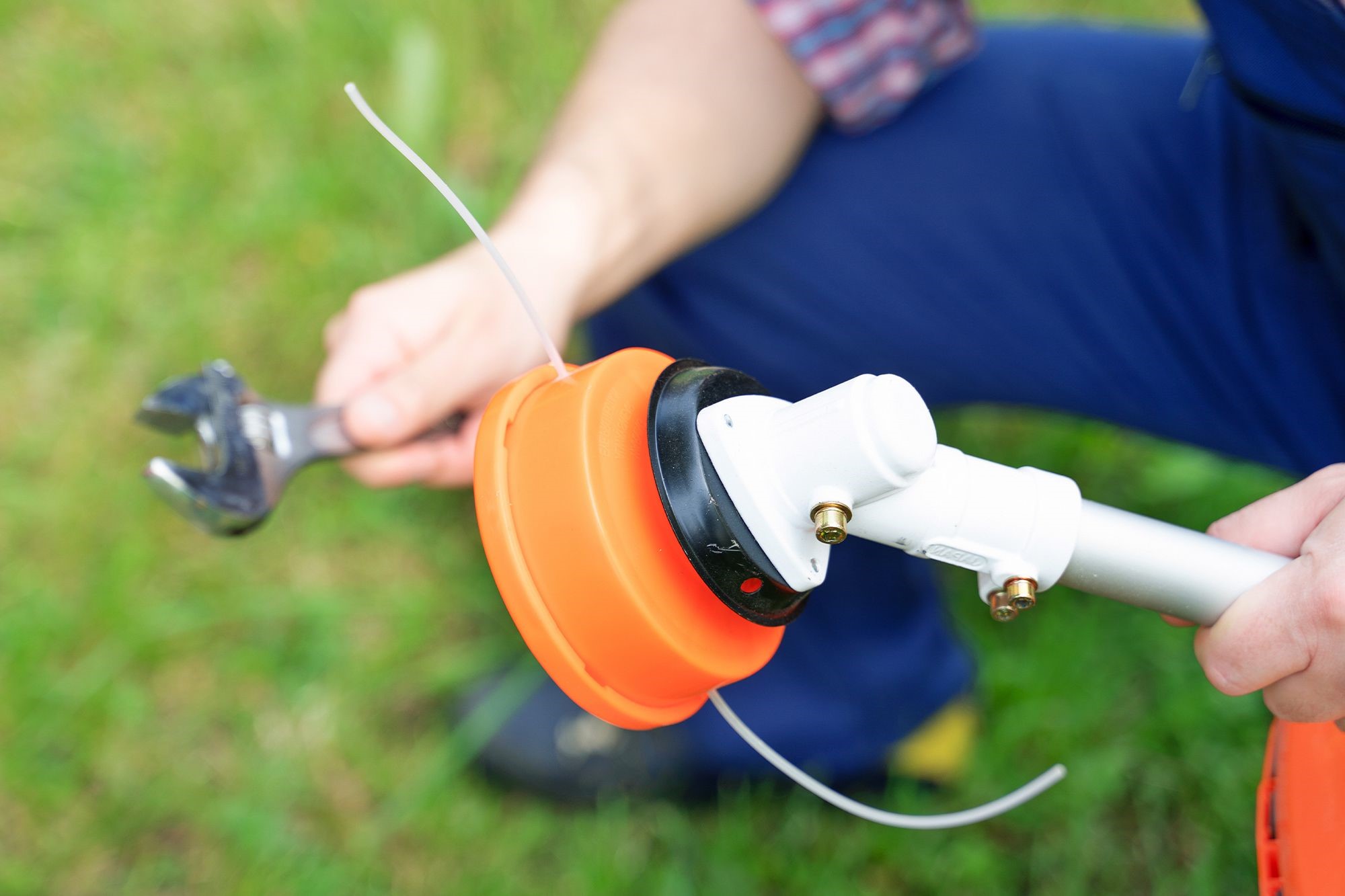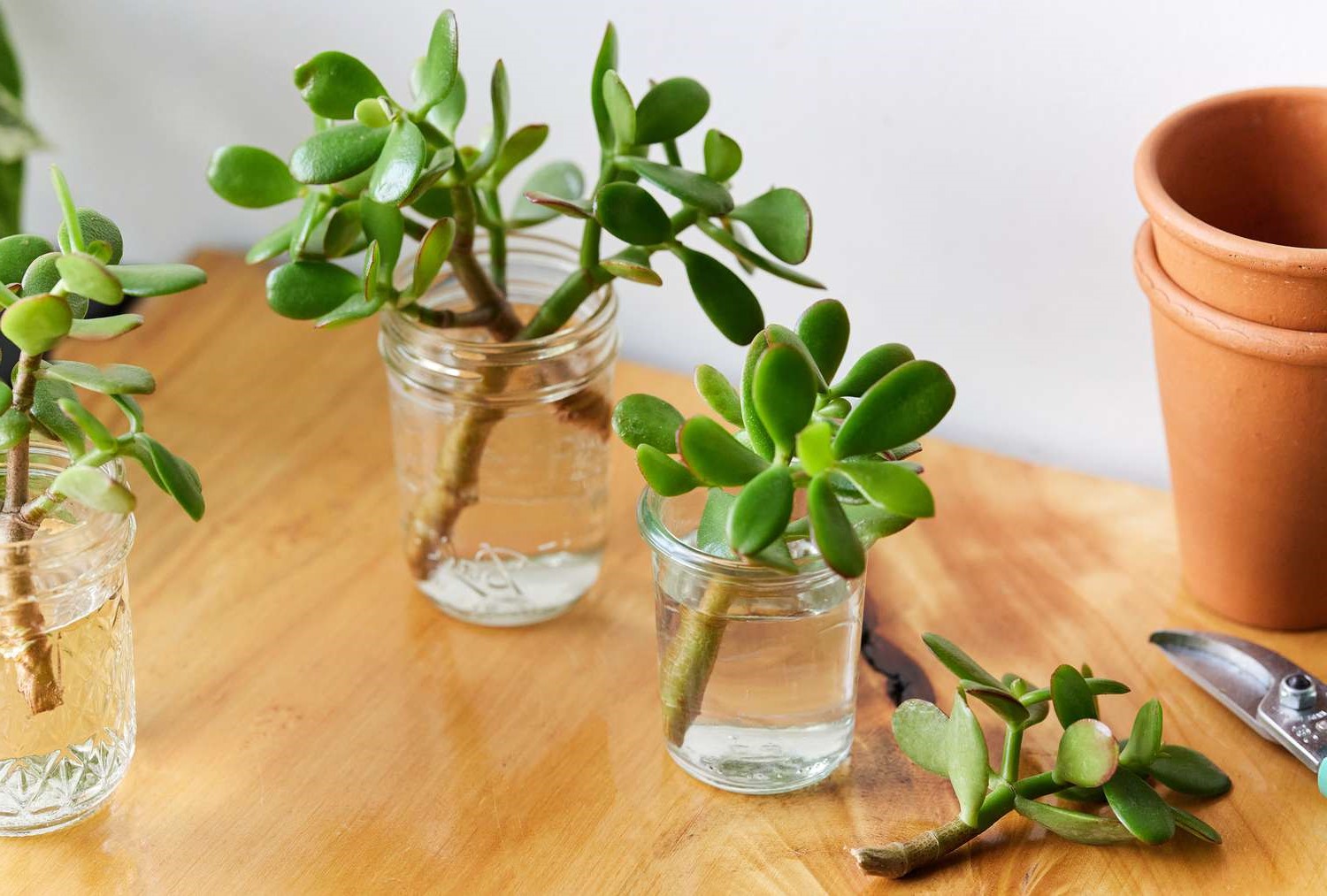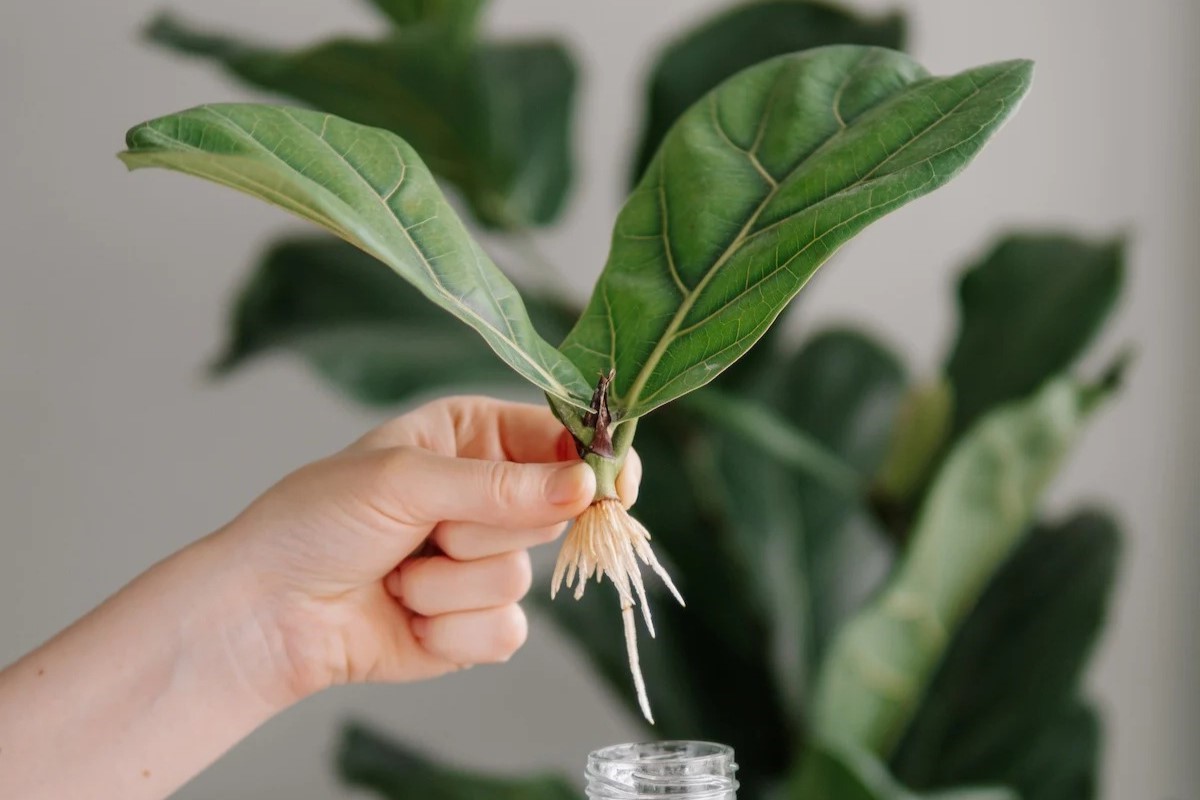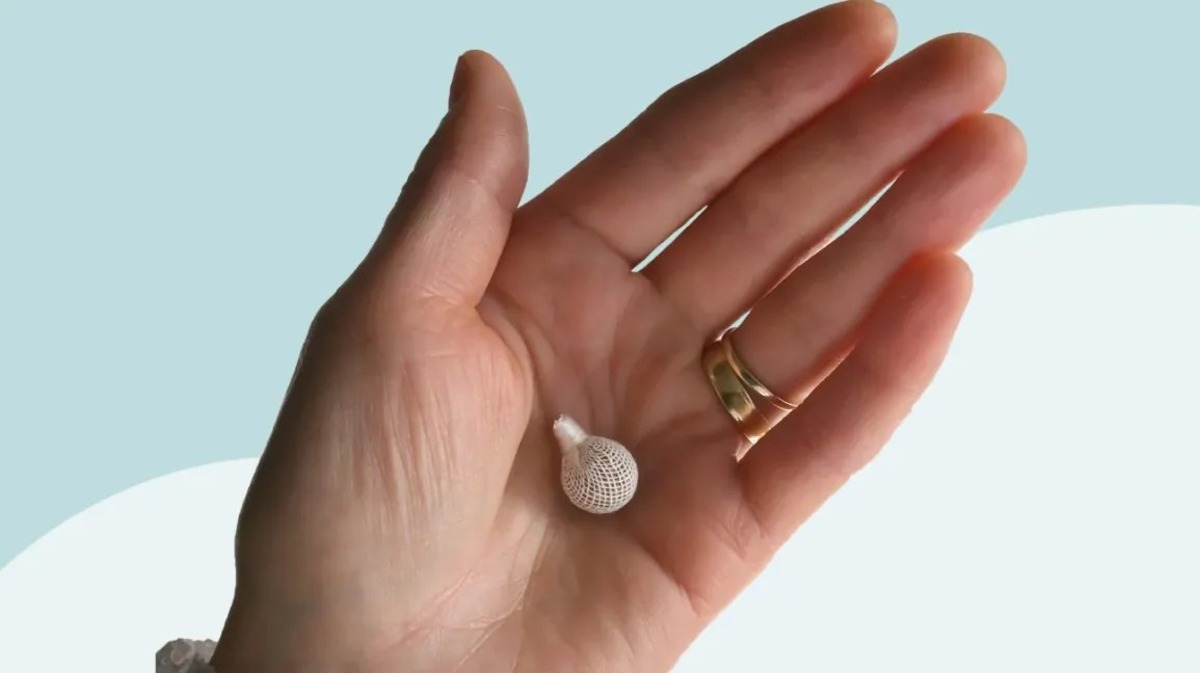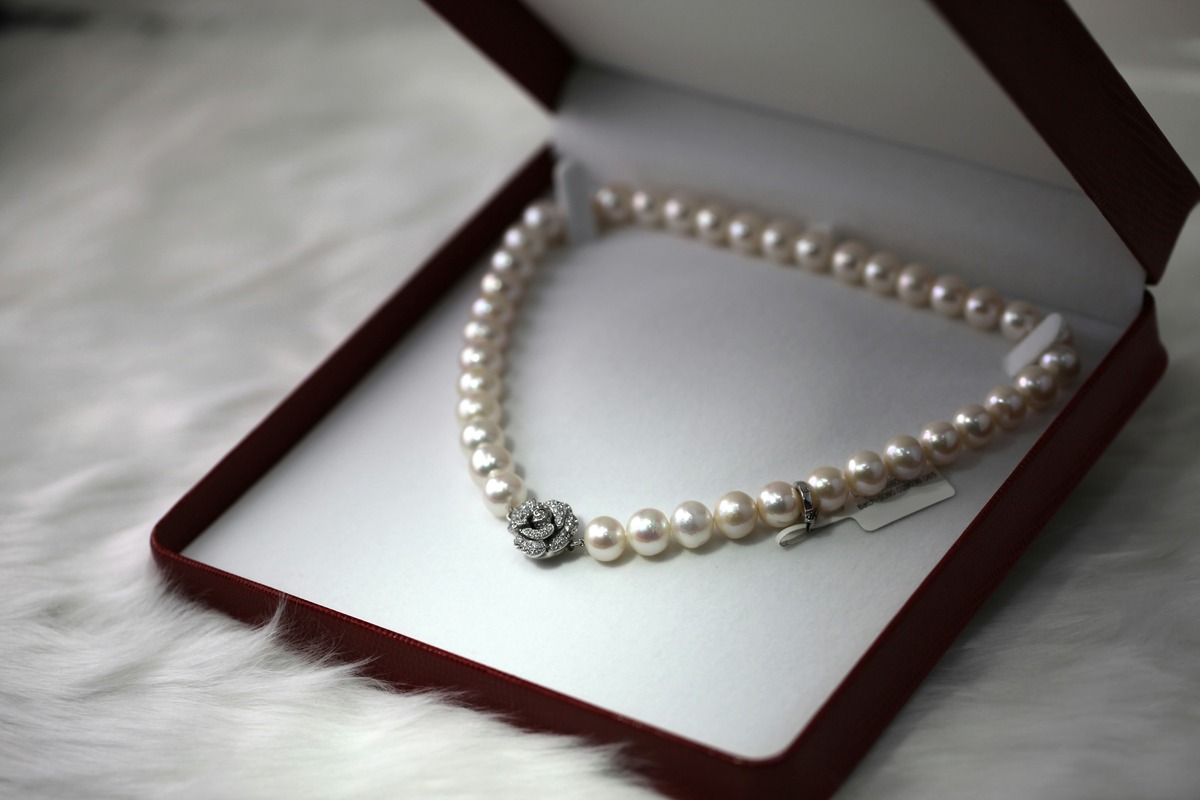Home>Home and Garden>How To Propagate String Of Pearls
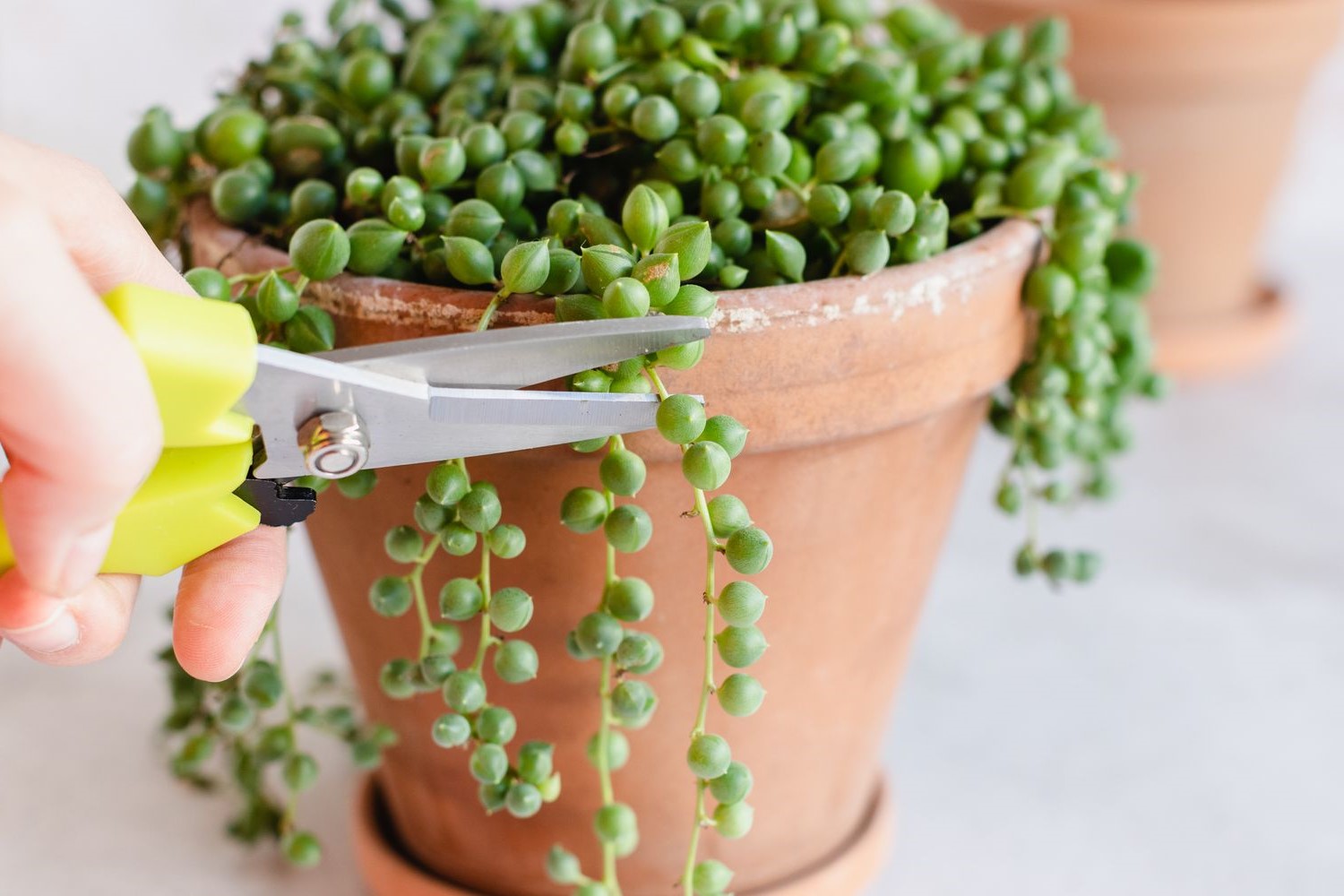

Home and Garden
How To Propagate String Of Pearls
Published: March 3, 2024
Learn how to propagate string of pearls at home with our easy step-by-step guide. Enhance your home and garden with this beautiful succulent plant. Discover the best propagation methods today!
(Many of the links in this article redirect to a specific reviewed product. Your purchase of these products through affiliate links helps to generate commission for Noodls.com, at no extra cost. Learn more)
Table of Contents
Introduction
String of Pearls, scientifically known as Senecio rowleyanus, is a captivating succulent plant that has gained immense popularity among gardening enthusiasts. Its unique appearance, with cascading strands of spherical leaves resembling a string of beads, makes it a sought-after addition to any indoor or outdoor garden. The plant's distinctive appearance and low maintenance requirements have contributed to its widespread appeal, making it an ideal choice for both novice and experienced gardeners.
This article aims to provide a comprehensive guide on propagating String of Pearls, allowing individuals to expand their plant collection or share this delightful succulent with friends and family. Whether you're a seasoned gardener looking to broaden your propagation techniques or a beginner eager to delve into the world of plant propagation, this guide will equip you with the knowledge and confidence to propagate String of Pearls successfully.
Understanding the intricacies of String of Pearls propagation is essential for fostering a thriving and abundant garden. By exploring the various propagation methods, including propagating from cuttings, division, and seeds, you'll gain valuable insights into the most effective approaches for multiplying your String of Pearls plants. Additionally, we'll delve into expert tips and best practices to ensure a seamless propagation process, empowering you to nurture healthy and flourishing new plants.
Embark on this propagation journey with an open mind and a willingness to embrace the rewarding experience of cultivating new life from a beloved plant. Whether you're drawn to the meditative nature of gardening or simply captivated by the allure of String of Pearls, this guide will serve as your trusted companion, offering guidance and inspiration as you embark on your propagation endeavors.
Understanding String of Pearls
String of Pearls, scientifically known as Senecio rowleyanus, is a stunning succulent plant characterized by its distinctive trailing stems adorned with small, spherical leaves resembling a string of glistening pearls. This unique appearance has earned it endearing nicknames such as "bead plant" and "string of beads," adding to its charm and allure.
Native to the arid regions of southwest Africa, String of Pearls has adapted to thrive in dry, desert-like conditions, making it well-suited for arid and semi-arid climates. Its succulent nature enables it to store water within its plump, bead-like leaves, allowing the plant to withstand periods of drought with ease. This resilience, coupled with its striking aesthetic appeal, has contributed to the widespread admiration and cultivation of String of Pearls in various parts of the world.
In its natural habitat, String of Pearls often grows as a ground cover, cascading over rocks and spilling from elevated surfaces. This growth habit makes it an ideal candidate for hanging baskets, where its trailing stems can drape gracefully, creating an enchanting display of verdant pearls. When cultivated outdoors, String of Pearls thrives in well-draining soil and basks in ample sunlight, although it appreciates some protection from intense midday sun in exceptionally hot climates.
Indoors, String of Pearls flourishes in bright, indirect light, making it an excellent choice for adorning windowsills, shelves, or hanging planters in well-lit rooms. Its cascading form adds a touch of whimsy and elegance to interior spaces, infusing them with a refreshing dose of natural beauty.
Beyond its visual appeal, String of Pearls offers a delightful tactile experience, with its succulent, bead-like leaves inviting gentle touch and admiration. The plant's growth pattern, characterized by the development of new pearls along its trailing stems, adds an element of dynamism to its overall appearance, creating a living tapestry of green orbs.
Understanding the unique characteristics and growth preferences of String of Pearls is essential for successfully propagating and caring for this captivating succulent. By delving into the intricacies of its natural habitat and growth habits, we can gain valuable insights that will inform our propagation methods and contribute to the overall well-being of this enchanting plant.
Propagation Methods
Propagation is the process of creating new plants from existing ones, allowing gardeners to expand their plant collection and share the beauty of their favorite species with others. When it comes to propagating String of Pearls, several methods can be employed to achieve successful results. Each propagation method offers unique advantages and considerations, catering to different preferences and circumstances. By exploring these methods, gardeners can select the approach that best aligns with their skills, resources, and desired outcomes.
Propagating from Cuttings
One of the most popular and reliable methods for propagating String of Pearls is through stem cuttings. This straightforward technique involves carefully snipping a healthy stem from the parent plant and encouraging it to develop roots, ultimately giving rise to a new, independent plant. To propagate from cuttings, select a mature, healthy stem with several sets of pearls and use clean, sharp scissors or pruning shears to make a clean cut just below a set of leaves. It's crucial to allow the cutting to callus for a few days before planting it in well-draining soil to prevent rotting.
Propagating from Division
Another effective method for propagating String of Pearls involves division, which is particularly suitable for mature plants with multiple trailing stems. To propagate through division, gently remove the plant from its pot and carefully separate the individual stems, ensuring that each division has a healthy root system attached. These separated stems can then be planted in their own containers, allowing them to establish themselves and thrive as independent plants.
Read more: How To Propagate Monstera
Propagating from Seeds
While less commonly practiced due to the time and patience it requires, propagating String of Pearls from seeds offers a fascinating and rewarding propagation experience. Collecting seeds from mature String of Pearls plants and sowing them in well-prepared soil provides an opportunity to witness the complete lifecycle of the plant, from germination to maturity. This method allows for the cultivation of a diverse array of String of Pearls varieties, as seeds may yield plants with unique characteristics and traits.
By familiarizing themselves with these propagation methods, gardeners can confidently embark on their propagation journey, selecting the approach that best suits their preferences and circumstances. Whether opting for the simplicity of stem cuttings, the divisiveness of division, or the patience of seed propagation, each method offers a pathway to expanding the presence of String of Pearls in the garden and sharing its beauty with others.
Propagating from Cuttings
Propagating String of Pearls from cuttings is a popular and reliable method that allows gardeners to create new plants with ease. This straightforward technique offers an efficient way to expand one's collection of String of Pearls while preserving the unique characteristics of the parent plant. By following a few simple steps, gardeners can successfully propagate this captivating succulent, fostering a sense of accomplishment and connection with the propagation process.
To begin the propagation journey, it's essential to select a healthy and mature stem from the parent String of Pearls plant. Look for a stem that exhibits robust growth and features several sets of plump, spherical leaves, as these are indicative of a thriving and vigorous plant. Using clean and sharp scissors or pruning shears, make a precise cut just below a set of leaves, ensuring that the cutting is approximately 3 to 5 inches in length. This careful approach minimizes stress on the parent plant and provides the cutting with the best chance of developing roots.
After obtaining the cutting, it's crucial to allow the severed end to callus for a few days before proceeding with the next steps. This callusing period is essential for the cutting to form a protective layer, reducing the risk of rot when it is planted in soil. Place the cutting in a warm, dry location with indirect sunlight, allowing the callus to develop gradually. Once the cutting has callused, it is ready to be planted in well-draining soil, ideally a mix formulated for succulent plants. The soil should provide adequate aeration and drainage, preventing waterlogged conditions that could impede root development.
When planting the cutting, gently insert the callused end into the soil, ensuring that at least one set of leaves remains above the surface. This positioning allows the cutting to establish a secure foothold in the soil while enabling the development of new roots from the callused end. After planting, lightly water the soil to provide moisture without saturating it, and place the container in a location with bright, indirect light. Over time, the cutting will begin to develop roots, signifying the successful initiation of a new String of Pearls plant.
By propagating String of Pearls from cuttings, gardeners can witness the remarkable process of creating new life from a single stem, fostering a deeper appreciation for the interconnectedness of plant propagation and growth. This method offers a gratifying opportunity to nurture and care for the newly propagated plant, ultimately contributing to the expansion of one's garden and the sharing of String of Pearls' enchanting beauty with others.
Propagating from Division
Propagating String of Pearls through division presents an effective method for expanding one's collection of these captivating succulents. This approach is particularly suitable for mature plants with multiple trailing stems, offering a straightforward way to create new, independent plants while ensuring the continued vitality of the parent specimen.
To initiate the division process, carefully remove the String of Pearls plant from its container, taking care to disturb the root system as little as possible. Once the plant is gently extracted, assess its structure to identify suitable sections for division. Each division should ideally consist of a healthy stem with an attached root system, ensuring that it possesses the necessary resources to thrive independently.
Using clean and sharp gardening tools, such as scissors or pruning shears, delicately separate the individual stems, ensuring that each division retains a sufficient portion of the root system. It's essential to handle the plant with care during this process, minimizing stress on both the parent plant and the divisions to promote successful propagation.
After the divisions have been separated, they can be planted in individual containers filled with well-draining soil, ideally a specialized mix formulated for succulent plants. This soil composition facilitates adequate aeration and drainage, creating an optimal environment for the newly divided plants to establish themselves. When planting the divisions, position them at a suitable depth, ensuring that the roots are adequately covered while the stems and leaves remain above the soil surface.
Following the planting process, provide the divisions with a gentle watering to settle the soil around the roots and initiate the establishment of the newly propagated plants. Place the containers in a location with bright, indirect light, allowing the divisions to acclimate to their new environment and commence their growth journey.
By propagating String of Pearls through division, gardeners can witness the seamless transition of individual stems into thriving, independent plants, each poised to contribute its unique charm to the garden. This method not only facilitates the expansion of one's plant collection but also offers a gratifying opportunity to engage with the propagation process, fostering a deeper connection with the captivating world of succulent gardening.
Propagating from Seeds
Propagating String of Pearls from seeds offers an intriguing and rewarding approach to expanding one's collection of these enchanting succulents. While less commonly practiced than other propagation methods, such as stem cuttings and division, seed propagation provides a unique opportunity to witness the complete lifecycle of the plant, from germination to maturity. This method also allows for the cultivation of a diverse array of String of Pearls varieties, as seeds may yield plants with unique characteristics and traits.
To begin the seed propagation process, it's essential to obtain mature seeds from a healthy and thriving String of Pearls plant. The seeds are typically contained within small, dried seed pods, which can be gently collected and stored for propagation purposes. When collecting seeds, it's important to ensure that they are fully mature and have had sufficient time to develop within the seed pods, as this enhances their viability for germination.
Once the seeds have been collected, prepare a suitable growing medium for sowing. A well-draining and nutrient-rich soil mix, specifically formulated for succulent plants, provides an ideal environment for seed germination and early growth. Fill small seedling trays or containers with the prepared soil, ensuring that it is evenly distributed and lightly compacted to create a stable foundation for the seeds.
Carefully place the String of Pearls seeds on the surface of the soil, spacing them evenly to allow for adequate airflow and room for growth. It's important to avoid burying the seeds too deeply, as this can impede their ability to germinate successfully. After placing the seeds, lightly press them into the soil to ensure good seed-to-soil contact, promoting the exchange of moisture and nutrients essential for germination.
Once the seeds have been sown, provide a gentle misting of water to moisten the soil without causing waterlogging. It's crucial to maintain consistent moisture levels during the germination period, as this supports the emergence of delicate seedlings. Place the seedling trays or containers in a location with bright, indirect light, ensuring that they receive the optimal conditions for germination and early growth.
As the seeds germinate and the seedlings begin to emerge, continue to monitor the moisture levels and provide gentle watering as needed. Over time, the seedlings will develop and grow, gradually exhibiting the characteristic traits of String of Pearls, including their spherical leaves and trailing growth habit. As the seedlings mature, they can be transplanted into individual containers, allowing them to establish themselves and flourish as independent plants.
By propagating String of Pearls from seeds, gardeners can embark on a captivating journey that celebrates the remarkable process of plant reproduction and growth. This method not only expands the presence of String of Pearls in the garden but also offers a profound connection to the natural cycles of life and the enduring beauty of succulent plants.
Read more: How To Propagate Hydrangeas
Tips for Successful Propagation
Successful propagation of String of Pearls relies on a combination of attentive care, strategic techniques, and a deep understanding of the plant's unique requirements. Whether embarking on the propagation journey for the first time or seeking to refine existing practices, incorporating the following tips can significantly enhance the likelihood of achieving thriving new plants.
-
Optimal Growing Conditions: Providing the ideal growing conditions is paramount for successful propagation. String of Pearls thrives in bright, indirect light, making it essential to position propagated cuttings, divisions, or seedlings in locations that offer ample natural light without exposing them to direct, intense sunlight. Additionally, maintaining a consistent temperature range, ideally between 70-85°F (21-29°C), fosters favorable conditions for root development and overall growth.
-
Well-Draining Soil: Utilizing a well-draining soil mix formulated for succulent plants is crucial for preventing waterlogged conditions that can impede root establishment and lead to rot. The soil should offer excellent aeration and drainage, promoting healthy root development and minimizing the risk of moisture-related issues.
-
Moderate Watering: String of Pearls is a succulent plant with water-storing capabilities, making it susceptible to root rot if overwatered. When propagating, it's essential to practice moderation in watering, allowing the soil to dry out partially between waterings. This approach supports the development of robust root systems while safeguarding against excessive moisture.
-
Patience and Observation: Patience is a virtue when propagating String of Pearls, as the process of root establishment and new growth takes time. Regularly observe the propagated plants, monitoring their progress and responding to their needs accordingly. This attentive approach enables gardeners to intervene if issues arise and celebrate the incremental milestones of successful propagation.
-
Protection from Frost: If propagating outdoors in regions with colder climates, it's crucial to shield the newly propagated plants from frost and extreme cold. String of Pearls is sensitive to freezing temperatures, and providing adequate protection, such as bringing the plants indoors or utilizing protective coverings, ensures their well-being during adverse weather conditions.
-
Gentle Handling: When handling cuttings, divisions, or seedlings, exercising gentle care minimizes stress on the plants and promotes successful acclimatization. Avoid excessive handling or disturbances to the root systems, allowing the propagated plants to establish themselves without unnecessary disruption.
By incorporating these tips into the propagation process, gardeners can cultivate a thriving and abundant collection of String of Pearls, fostering a deeper appreciation for the art and science of plant propagation. Embracing these best practices not only enhances the likelihood of successful propagation but also contributes to the overall well-being and longevity of the propagated plants, enriching the gardening experience with the enduring beauty of this beloved succulent.
Conclusion
In conclusion, the propagation of String of Pearls presents a captivating journey that intertwines the art of plant reproduction with the nurturing of new life. Through the exploration of propagation methods, including stem cuttings, division, and seed propagation, gardeners can expand their collection of these enchanting succulents while gaining a deeper understanding of their unique growth patterns and requirements.
The propagation process not only offers a means of multiplying the presence of String of Pearls in the garden but also serves as a testament to the resilience and adaptability of these remarkable plants. By carefully selecting healthy stems for cuttings, delicately dividing mature plants, or sowing seeds to witness the emergence of new life, gardeners engage in a profound connection with the natural world, celebrating the enduring beauty and vitality of succulent plants.
As gardeners embark on their propagation endeavors, it is essential to embrace the patience and attentiveness required for successful propagation. Providing optimal growing conditions, including suitable light exposure and well-draining soil, lays the foundation for robust root development and overall plant health. Additionally, exercising moderation in watering and protecting propagated plants from adverse environmental conditions contribute to their well-being and long-term vitality.
The propagation of String of Pearls transcends the mere act of creating new plants; it embodies a harmonious partnership between gardeners and nature, fostering a sense of stewardship and appreciation for the intricate processes that sustain life. Each propagated plant represents a testament to the gardener's dedication and care, embodying the potential for growth, beauty, and the enduring cycle of renewal.
As gardeners witness the successful establishment of propagated String of Pearls plants, they are rewarded not only with an expanded garden but also with a profound connection to the natural rhythms of growth and regeneration. The propagation journey serves as a reminder of the interconnectedness of all living things, inspiring a sense of wonder and reverence for the remarkable journey of life that unfolds within the garden.
In essence, the propagation of String of Pearls transcends horticultural practice; it is a celebration of life, growth, and the enduring beauty of nature. As gardeners propagate these captivating succulents, they partake in a timeless tradition that honors the cycles of renewal and the boundless potential for new beginnings, enriching their lives and gardens with the timeless allure of String of Pearls.
